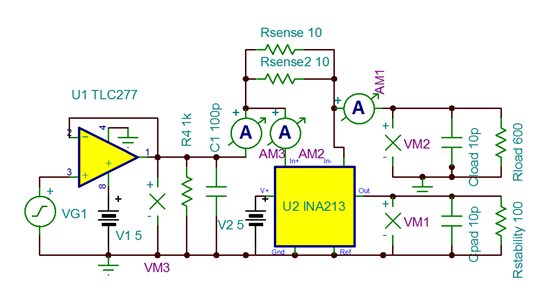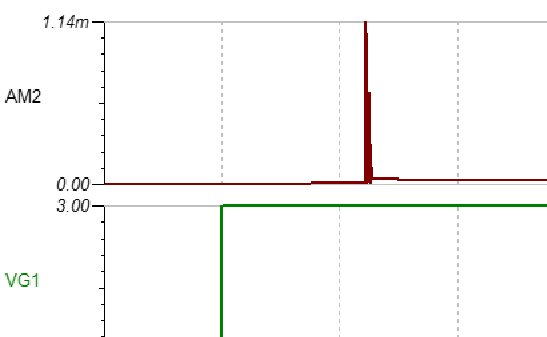Hi
I would like to use the INA21X family for current sensing of about 5mA (load of 600ohm with supply of 3V)
for this reason I am using a series resistor of 10ohm in the input of INA213.
On transient simulation, when using a step response of the 3V supply, I see that for a short time, the INA213 takes about 1mA of current like so:
Is that normal? How can I reduce this current?
Thanks, Noam Kaminski



